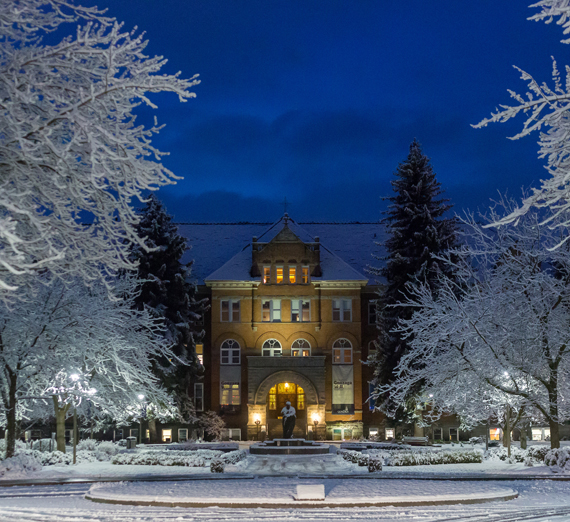Running Fast to Slow Down: The journey of Advent

I guess I could be called a “trail-runner.” There is a magical ontological shift that takes place when, through practice, one ceases to “go running” and becomes a (trail) runner. The activity shifts into an identity. For me, this truly took place over the Advent seasons for reasons I would like to share.
What appeals to me about running in the woods is the natural scenery. I grew up running on a monotonous track. The opaque landscape tended to oppressively remind me how little I had traveled in how short a time. Running across landscapes opened me up to the novelty of a changing landscape, the thrill of the downhill, the drama of the climb, and the companionship of a new horizon after each turn.
For trail runners, the weather offers another spectacle of engagement. At first, the cold and wet were a deterrence to running. Once the infection, nay addiction, of the sport started to infiltrate my identity, the weather became another shifting bauble to contemplate — mainly the snow, the ice, and the cold.
Some people run for speed. The beauty of trail running is that it creates a corollary relationship with time. Time spent on the trail and time spent in nature are intrinsic gifts in themselves. Watches and distances become excuses to fulfill a marriage with the landscape. Questions of “how fast?” dissipate to “how long can I stay out here?”. The snow and the winter are both conducive and challenging to this reality.
Snow and ice forced me, as a runner to slow down. Movement, coincidentally, also aids in warmth. While running in the snow, the two come together in a holy amalgamation. Blanketed snow, in regions where humans don’t walk or drive, baptize the landscape. Early evenings allow for a subtle moonscape to sparkle the white, while gray, snowy days placate a land air mirroring. Snow falls quietly. If one is lost in a wooded landscape, and pauses, you can hear snow fall in a way that allows time to melt and freeze at the same time slowly.
Bird song, including magpie, warbler, finch, thrush, hairy, and woodpecker, carries over the snow with a newfound acoustic. Deer bound and leap through the snow, safer with predators hibernating, and free to run with abandon.
Running in snow landscapes forces one, for utility first, but eventually for pure enjoyment to slow down and observe. In this way, it is an appropriate activity for the Advent season. The buzz, the speed, the sound of life all coalesces, if we are not careful, during the holiday season. The temptation can be to speed up! But nature has different plans. The cosmic ramifications of Jesus’ coming into the world mean that cold, darkness, and potentially blankets of snow can immobilize our fastidious tendencies.
I realize that running on trails is my particular cure and maybe your specific poison. Don’t let the metaphor be the mean. Nature offers us all the contemplative tools we need to prepare for Christmas. Whether running, walking, observing from a warm fire-lit window, snowshoeing, skiing, biking, driving, or other I implore you to make a note of how nature prepares during this season. We must look no further for a better teacher to slow, to watch, and to hear a world charged with God’s grandeur. Perhaps, for a moment, this all we need to run toward this Advent season.
For Reflection:
1) How are you allowing nature to teach you about waiting, contemplation, and preparation for Jesus this Advent?
2) It can be hard to slow down. How can you carve out places that give you and joy and life and enjoy them slowly this Advent?
